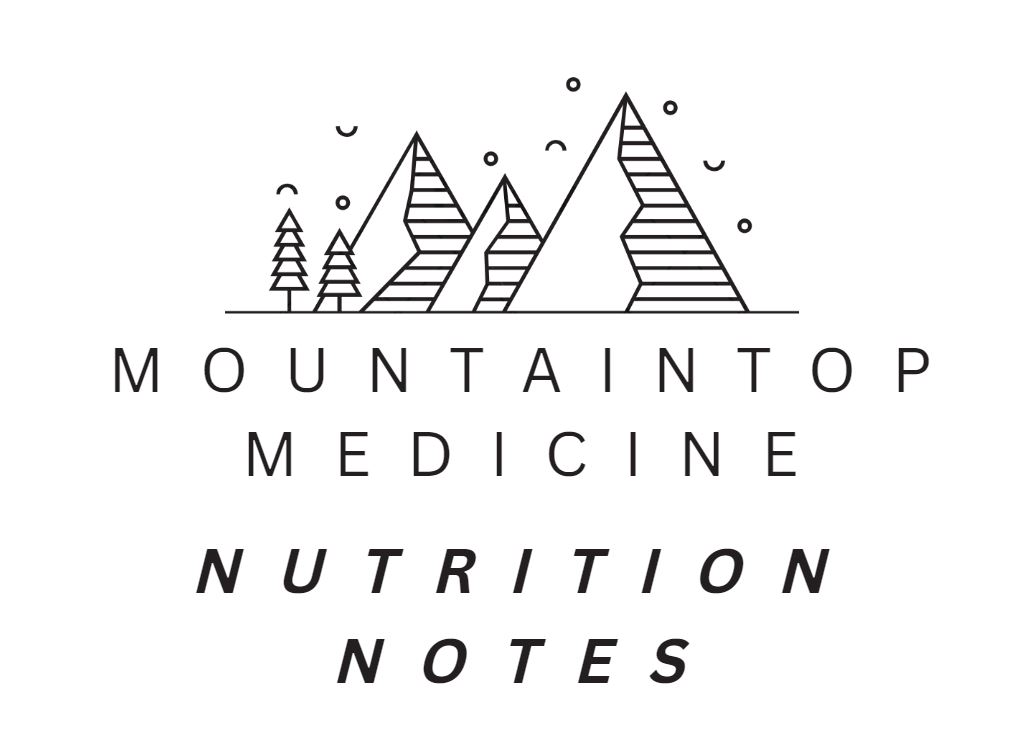Mountaintop Medicine: Nutrition Notes — Grocery Shop Smarter, Not Harder


Welcome back to another edition of Nutrition Notes at Mountaintop Medicine!
This week, we are discussing the topic of grocery shopping- and how easy it can be to shop for healthy, nutrient-dense foods. As a registered dietitian, I am well aware how challenging and intimidating grocery shopping is when beginning a healthy lifestyle. Over time, I’ve noticed that many of my patients don’t know where to start when it comes to selecting nutritious foods.


Leah Gardner, EPH Registered Dietitian
Some of the Challenges of Healthy Grocery Shopping
- The seemingly endless aisles of food choices that often come in deceptive packaging can be confusing when determining if products are truly healthy.
- The perception that healthy foods are “too expensive.” With the right budgeting tactics, nutritious foods can be pretty affordable.
- Going to the grocery store without a list. This can make it difficult to know what you need to get, and even derail shopping for high fat or sugary processed foods. It’s always best to have a plan.
What does a healthy grocery list include?
Studies have shown that creating grocery lists helps us to make healthier choices when it comes to grocery shopping. Whether you grocery shop weekly or purchase foods as needed, having a plan helps us to stay on track and reminds us of the foods we really need. This is also helpful when trying to stick to a budget because it helps avoid purchasing unnecessary items. Most people find it easier to plan weekly meals before creating a grocery list, so they know exactly what they need to get when they go shopping.
Generally, a healthy, well-rounded diet should primarily comprise whole, nutrient-dense foods. I’m talking about fruits, vegetables, whole grains, and lean protein sources like chicken, fish and eggs, beans, nuts, and seeds. These are foods to prioritize on your list.
Here are some examples of what a healthy grocery list might include:
Fruits: apples, bananas, blueberries, clementines, grapefruits, and avocados
Non-starchy vegetables: broccoli, asparagus, carrots, onions, spinach, peppers, and zucchini
Starchy vegetables: sweet potatoes, red potatoes, and butternut squash
Beans and legumes: black beans, kidney beans, and chickpeas
Grains: rolled oats, brown rice, basmati rice, and quinoa
Proteins: eggs, canned tuna, and chicken breast
Frozen foods: frozen fruit and vegetables
Nuts and seeds: roasted almonds, pumpkin seeds, and natural peanut butter
Dairy or dairy substitutes: whole milk, feta cheese, unsweetened almond milk, and Greek yogurt
Condiments: olive oil, salad dressing, and salsa
Perimeter Shopping
Unfortunately, many grocery stores are not designed to help us eat healthily. Rather, they are laid out to encourage us to purchase certain items, which are not commonly healthy. For example, grocery stores offer sales and make displays of processed foods such as refined snack foods, desserts, and sodas to entice customers to purchase these items. You’ll often find these at the end of aisles and near checkout counters.
Perimeter shopping is focusing on buying foods located on the outer edges of the grocery store. This can help you make healthier choices, as fresh fruits, vegetables, lean proteins such as eggs, chicken breast and fish, and other perishables are found there. Although, you can also find many healthy choices in the center aisles, including whole grains, nuts, seeds, natural nut butters, low sodium canned foods, condiments, and frozen foods. Just because the center aisles feature some highly processed foods, doesn’t mean you need to avoid these entire aisles completely.
Read the Nutrition Facts Label
Just because an item is packaged doesn’t mean it’s not unhealthy. It’s also important to keep in mind that just because a package says a food item is “organic,” “low sodium,” “fat free,” or has “zero sugar” doesn’t mean it’s necessarily healthy. It’s a good idea to read the nutrition facts labels of packaged items to decide whether you should purchase the item or leave it on the shelf.
Take a look at the list of ingredients, saturated fat content, and added sugar content of the food. Nutritious foods typically have a short list of easily comprehendible ingredients. If you don’t know what an ingredient is, it’s more than likely not so good for you. If the first few ingredients are a type of refined grain, sugar, or a highly processed oil, it’s typically a no-go for me.
Some things to keep in mind:
- Purchase mainly whole, nutrient-dense foods found on the outside perimeter of the store
- Stick to your grocery list or meal plan
- Avoid purchasing foods solely based on the packaging
- Read the nutrition facts labels of packaged foods
- Try to avoid impulse purchases
The bottom line is that healthy grocery shopping doesn’t have to be difficult or intimidating. With the right amount of prep and understanding of the store layout, healthy eating can be effortless. Shop smarter not harder! If you have any questions or if there are any nutrition-related topics that you would like me to discuss, please email me at LGardner@EPH.org.


